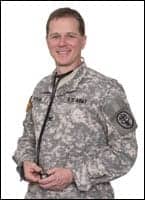
In nonsolid lung nodules, normal lung tissue is visible through the nodule. Nonsolid nodules are visible on CT scans of the chest, and management of them is challenging.
“Nonsolid nodules could be due to inflammation, infection or fibrosis, but could also be cancerous or a precursor of cancer,” said study co-author Claudia I. Henschke, from the Department of Radiology at Mount Sinai School of Medicine in New York City. “For screening, we have to define which nodules need further workup and how quickly we have to do that workup.”
In the new study, Henschke and colleagues analyzed results from 57,496 participants in the International Early Lung Cancer Program (I-ELCAP), a major worldwide initiative focused on reducing deaths from lung cancer. The patients underwent baseline and annual repeat screenings, and the researchers evaluated the prevalence of nonsolid nodules and their effect on long-term outcomes.
A nonsolid nodule was identified in 2,392 (4.2 percent) of the baseline screenings, and further analysis led to the diagnosis of 73 cases of cancer. A new nonsolid nodule was identified in 485 of 64,677 annual repeat screenings, or 0.7 percent, and 11 were diagnosed with Stage I cancer. Surgery was 100 percent curative in all cases, with a median follow-up since diagnosis of more than six years.
The nonsolid nodule developed a solid component—a warning sign of invasive cancer—in 22 cases prior to treatment. However, the median transition time from nonsolid to part-solid was more than two years. No cancers occurred in new nodules 15 millimeters or larger in diameter.
Findings suggest that nonsolid nodules of any size can be safely followed with low-dose CT at 12-month intervals to assess a potential transition to part-solid.
“The results show that if we see a nonsolid lung nodule of any size, we can tell people to come back in one year for another CT,” Henschke said. “These findings are important for reducing unnecessary CT scans and possible biopsies or surgery in programs of CT screening for lung cancer.”
One immediate benefit may be a reduction in the overtreatment of nodules, according to study co-author David F. Yankelevitz, from Mount Sinai.
“Many recommendations had been fairly aggressive with respect to nonsolid nodules,” Yankelevitz said. “These results show that there is no reason to be aggressive in pursuit of cancer, so long as the nodules stay in this nonsolid form.”
Along with Henschke and Yankelevitz, collaborators on “CT Screening for Lung Cancer: Nonsolid Nodules in Baseline and Annual Repeat Rounds,” included Rowena Yip, James P. Smith, Mingzhu Liang, Ying Liu, Dong Ming Xu, Mary M. Salvatore, Andrea S. Wolf, and Raja M. Flores, M.D. as the Writing Committee for The International Early Lung Cancer Action Program Investigators Group.
For patient-friendly information on lung CT, visit RadiologyInfo.org.
Get AXIS e-newsletters free. Subscribe here.




